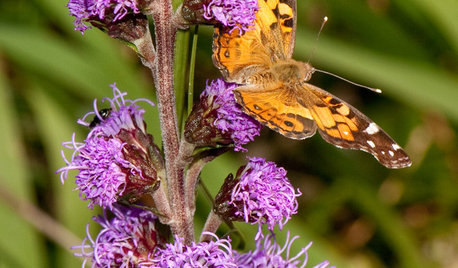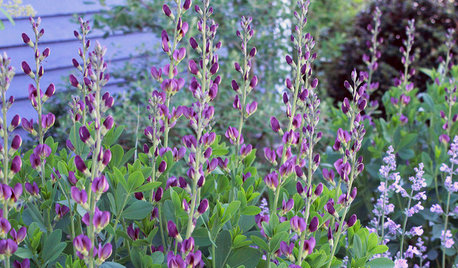Monarch Butterfly Crisis
docmom_gw
10 years ago
Related Stories

CALIFORNIA NATIVE PLANTSGreat Design Plant: Asclepias Is Attractive to Monarch Butterflies
Increase monarch butterfly populations in California by planting stunning native milkweeds
Full Story
FALL GARDENINGWhat Monarch Butterflies Taught Me About Garden Design
Thinking like a butterfly leads to fresh perspectives in the garden and in life
Full Story
GARDENING FOR BUTTERFLIESBe a Butterfly Savior — Garden for the Monarchs
Keep hope, beauty and kindness alive in the landscape by providing a refuge for these threatened enchanters
Full Story
GARDENING GUIDESGreat Design Plant: Asclepias Incarnata for a Butterfly Garden
Beautiful swamp milkweed makes it easy to help monarchs and other pollinators in eastern U.S. gardens
Full Story
GARDENING GUIDESAmerican Lady Butterflies Add Delight to Summer Gardens
Provide native nectar and larval host plants to welcome these migratory butterflies
Full Story
GARDENING GUIDESGreat Design Plant: Butterfly Milkweed, a Beacon in the Prairie
Vivacious orange flowers for you, nectar for the butterflies and bees. Asclepias tuberosa is worth planting for more reasons than one
Full Story
GARDENING GUIDES6 Plants That Beat Butterfly Bush for the Wildlife Draw
It's invasive, a nonnative and a poor insect magnet. Check out these better alternatives to butterfly bush in the garden
Full Story
GARDENING GUIDES6 Steps to Creating Your Butterfly Garden
Encourage these fanciful winged beauties to visit your garden while helping restore their fragmented habitat
Full Story
GARDENING FOR BUTTERFLIES7 Native Wildflowers to Make You an Awesome Butterfly Host
Offer the leaves of these and you’ll get more butterflies than with flower nectar alone
Full Story
GARDENING GUIDES20 Favorite Flowers for Butterflies and Bouquets
Discover perennials and annuals that do double duty as butterfly magnets and versatile cut flowers
Full StorySponsored






bogturtle
docmom_gwOriginal Author
Related Professionals
Wrentham Landscape Architects & Landscape Designers · Clark Landscape Architects & Landscape Designers · Addison Landscape Contractors · Brunswick Landscape Contractors · Live Oak Landscape Contractors · Pahrump Landscape Contractors · Brooklyn Roofing & Gutters · Memphis Roofing & Gutters · East Hill-Meridian Roofing & Gutters · Lake Forest Roofing & Gutters · Sauk Village Roofing & Gutters · Five Forks Siding & Exteriors · Lenoir Siding & Exteriors · Linden Siding & Exteriors · Palatine Siding & Exteriorsskibby (zone 4 Vermont)
rosefenn
ianna
dfscudder
agardenstateof_mind
agardenstateof_mind